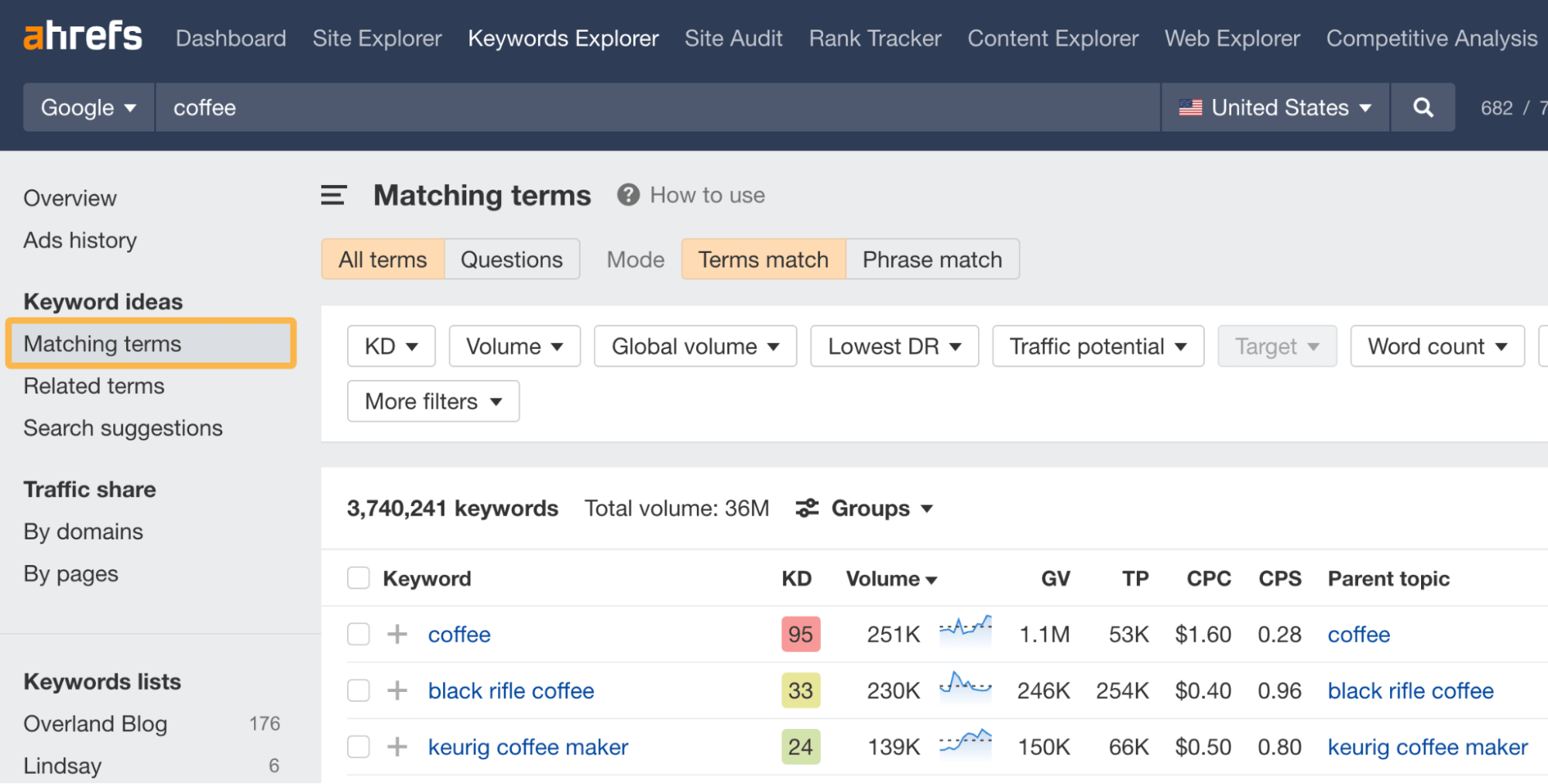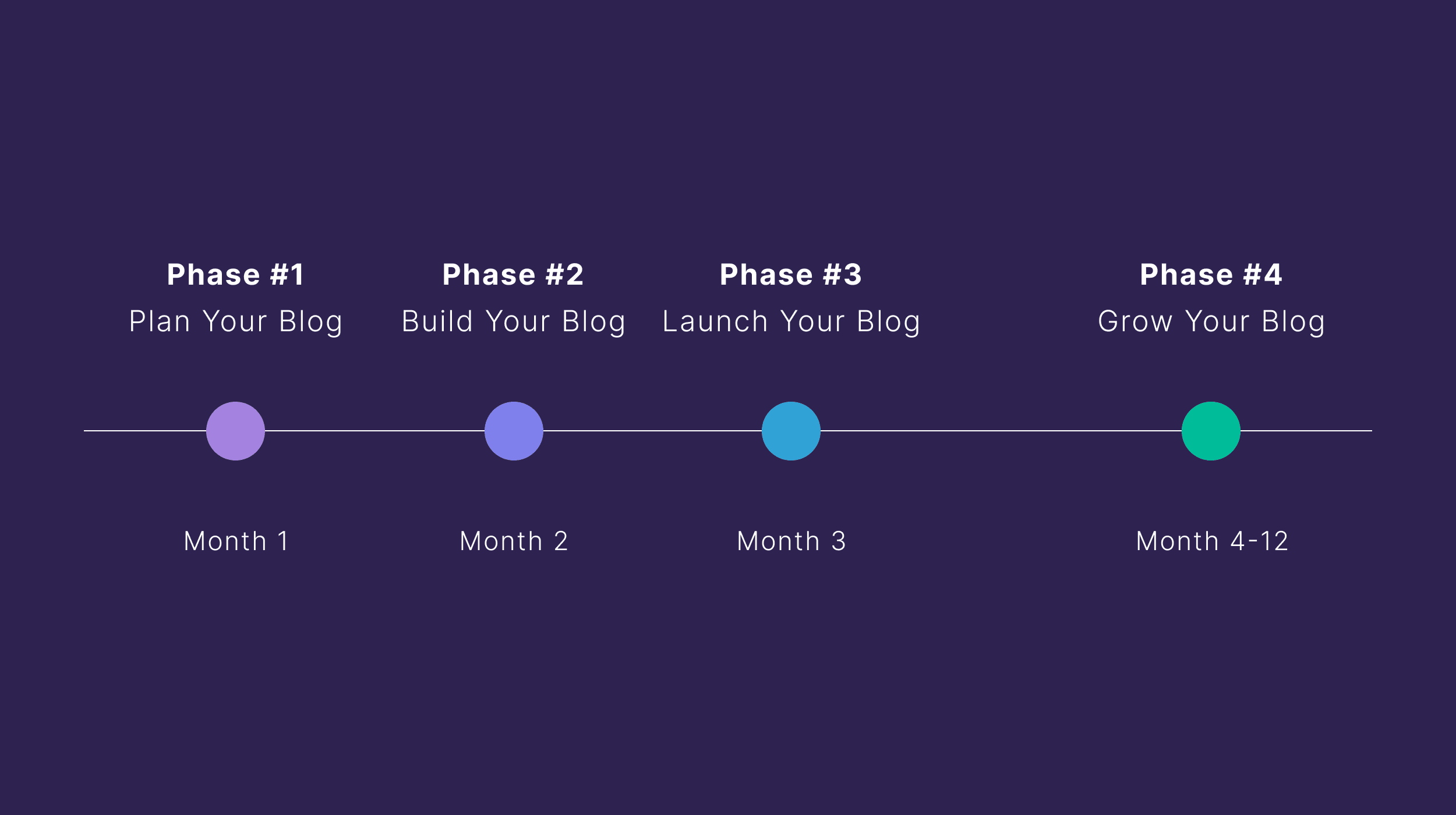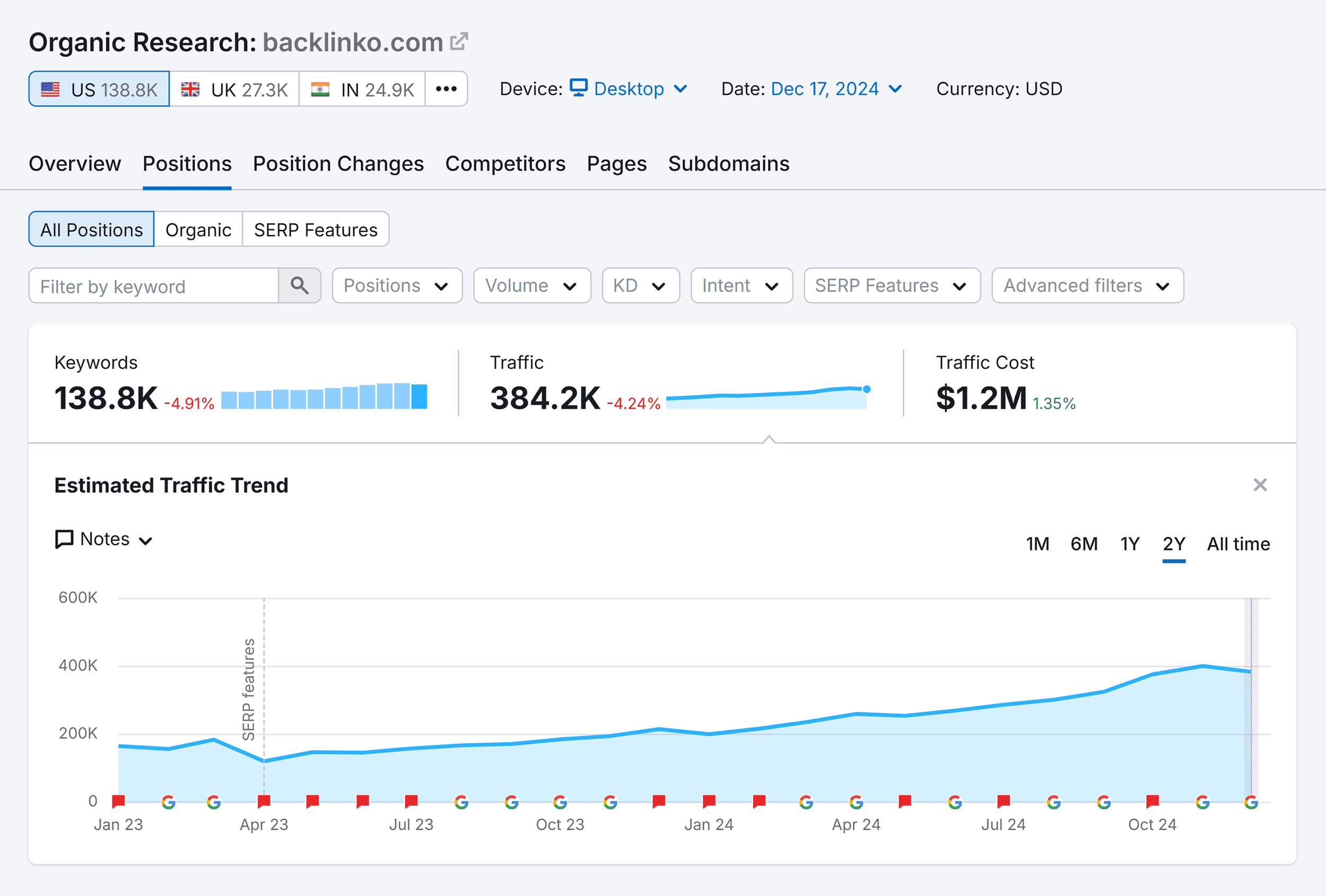So you want to promote your business?
I could give you some generic advice like “make a website” and “post on social media.” But you probably already thought of that—and likely haven’t had any luck with it yet.
Instead, let me share some of the proven, low-cost promotion strategies I’ve learned in my 10+ years as an entrepreneur running six-figure companies.
Here’s how to advertise your business.
2. Create (or improve) your Google Business page
If you have a physical business, a Google Business Profile (GBP) will help you show up on Google searches and in Google Maps—which is how most people find local businesses these days.
It’s one of the best free ways to promote your business that actually works. GBPs show up like this:
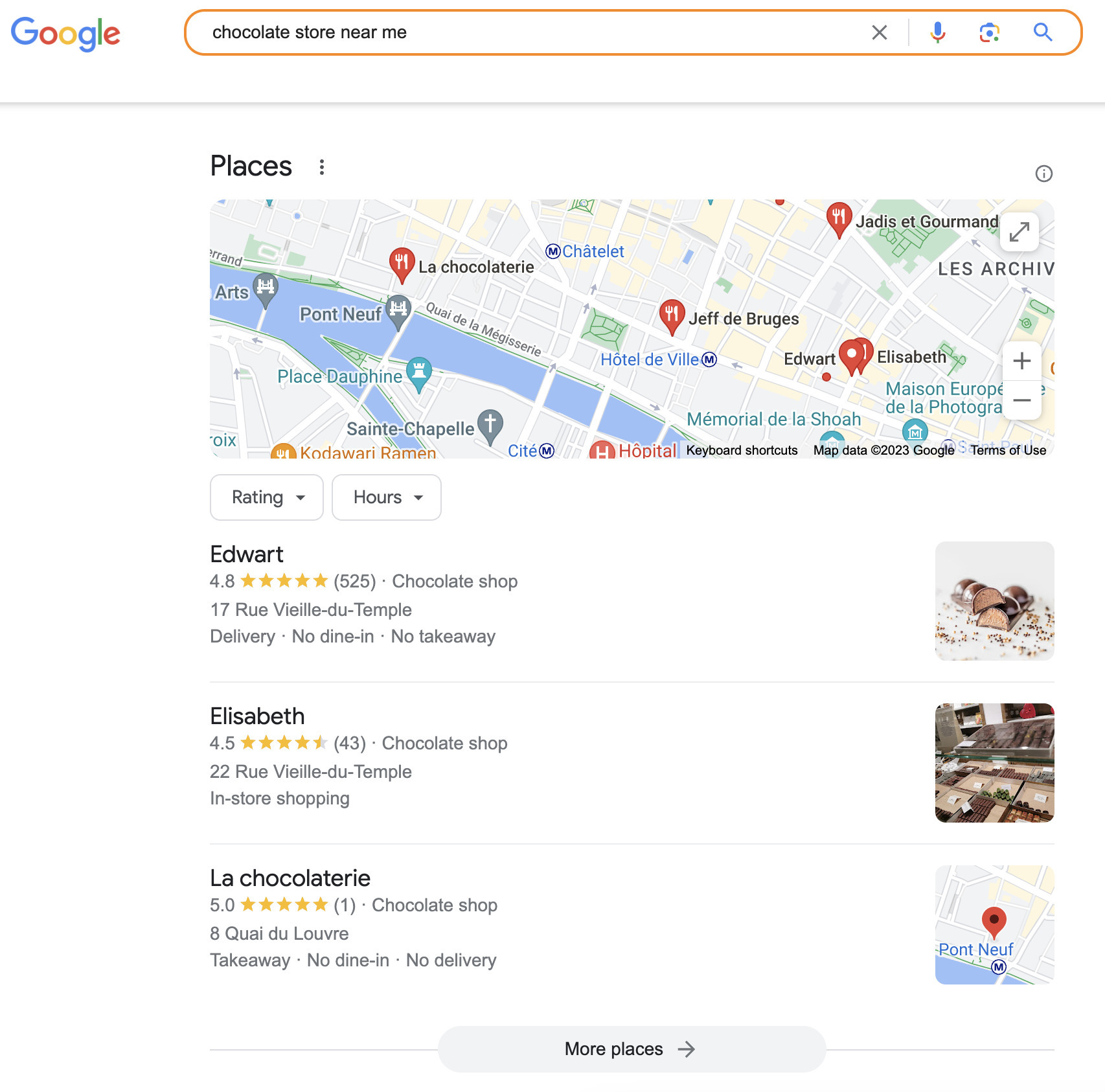
Here’s how to set one up (and optimize it for higher rankings and improved conversions):
- Create (or claim) your Google Business account
- Fill in your information: business name, address, phone number, email, hours of operation, etc
- Make sure to add any relevant photos of your business or your products or services
After you set up your profile, reach out to customers about giving you reviews. Reviews are extremely important to rank at the top of the search results. Without good reviews, your competition will outrank you.
Read our guide to optimizing your Google Business Profile for more info.
But wait, I thought you weren’t going to give me this generic advice?
Well, posting on social media is actually a great way to advertise your small business. However, posting randomly without a strategy won’t do anything but waste your time.
Here’s how to effectively advertise your business on social media:
Step 1. Choose the right social platform
Don’t try to do it all. While you can and should create a profile on the big social media platforms so you don’t lose your handle, it’s not necessary to use them all right off the bat.
Instead, see where your competitors are getting most of their traffic from and start with those platforms. You can find that information using Similarweb.
Back to my “coffee” example—let’s look at Death Wish Coffee to see where it’s succeeding on social:
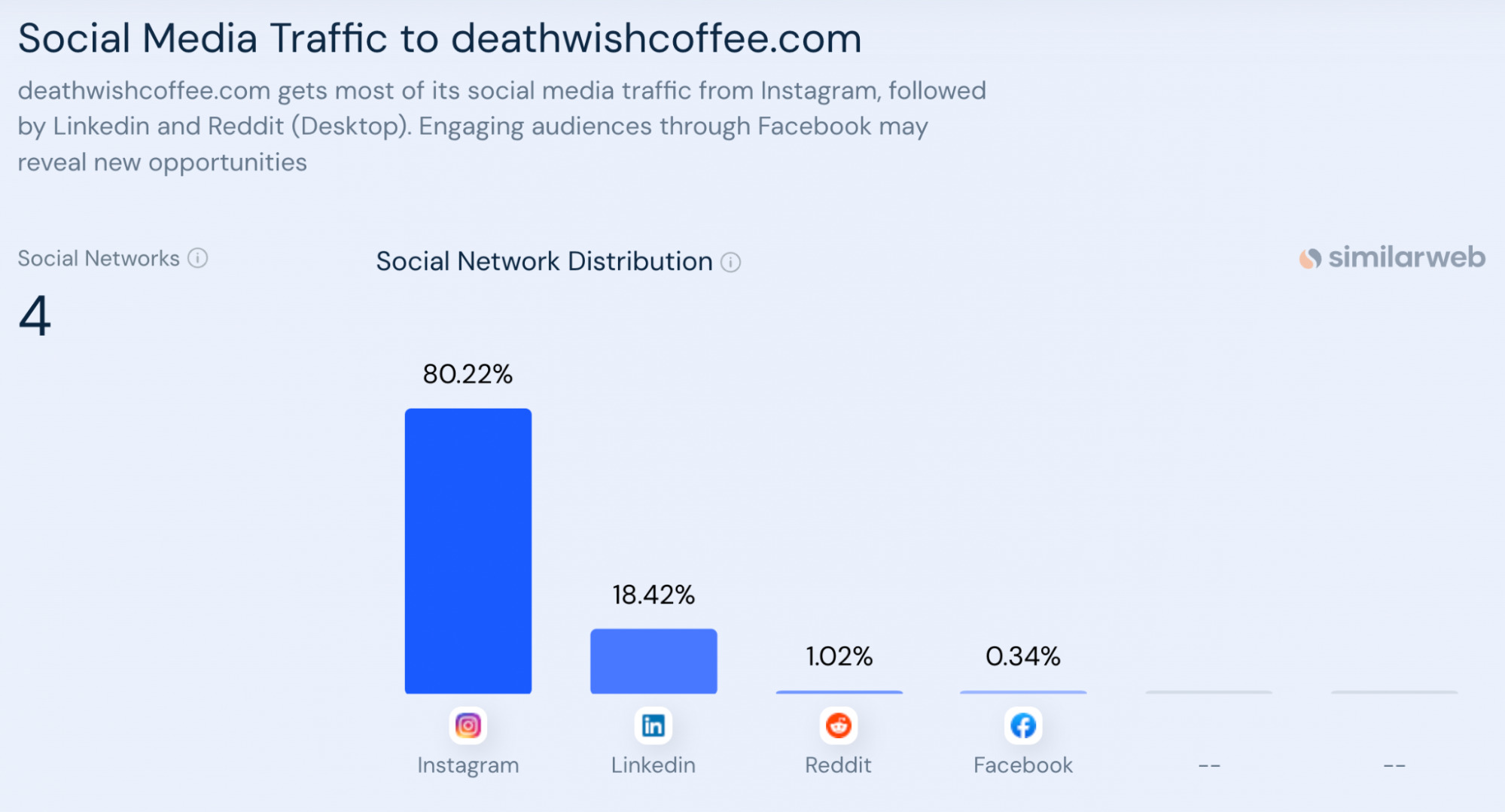
In this case, it gets the majority of its traffic from Instagram. I wouldn’t choose Instagram from just one example. But if several of your competitors are all succeeding on the same platform, that’s a good sign it’s a good platform to use.
Step 2. Create a content strategy
Now you need to make a game plan. What kind of content will you create? How frequently will you post? Who will make and post the content? What hashtags should you use?
These are all questions you need to answer. A little brainstorming goes a long way. Look at your competitors’ social media to see what’s doing well for them and to give you ideas.
Here are some guides to help you with this step:
We also have some free AI writing tools to help you with things like generating Instagram hashtags and writing your social media bio.
Step 3. Automate your posting
Remembering to post every day can quickly get exhausting. Instead, it’s best to set aside time every week to schedule all your posts for that week or even for the whole month.
You can use automation tools like Buffer or Hootsuite to schedule and automate your posting.
Step 4. Interact with your followers
While it can be tempting to just “set it and forget it,” the most value from social media will come from interacting with your followers. If you’re lucky enough to get people to comment on your posts, it’s worthwhile to take the time to respond.
You can even respond to comments right from your automation tool if you choose Buffer or Hootsuite. Again, this can be a weekly task—although people will appreciate faster response times.
Step 5. Track results and tweak over time
One of the reasons most businesses fail with social media is that they aren’t setting goals or tracking progress. How can you know if something is doing well if you aren’t tracking it?
Buffer and Hootsuite offer analytics to see how well your posts are doing, along with valuable information like which posts are performing the best and which times of day are best for posting. Use this information to tweak your strategy and post more of what’s working.
Pay-per-click (PPC) ads can be highly effective. I even have a friend who acquired over 800 new customers for a measly ad spend of $24.68.
Here’s how he did it:
Step 1. Build a landing page worth reading
People often send ad clicks straight to a product page or their homepage. While this can work, a dedicated landing page is often more effective.
For example, Mike created this page, which was worth reading and had a catchy title:

By offering something of value, you increase the chances of conversion.
Step 2. Make an offer
At the end of Mike’s article, he added a lead opt-in to get readers to join his mailing list:
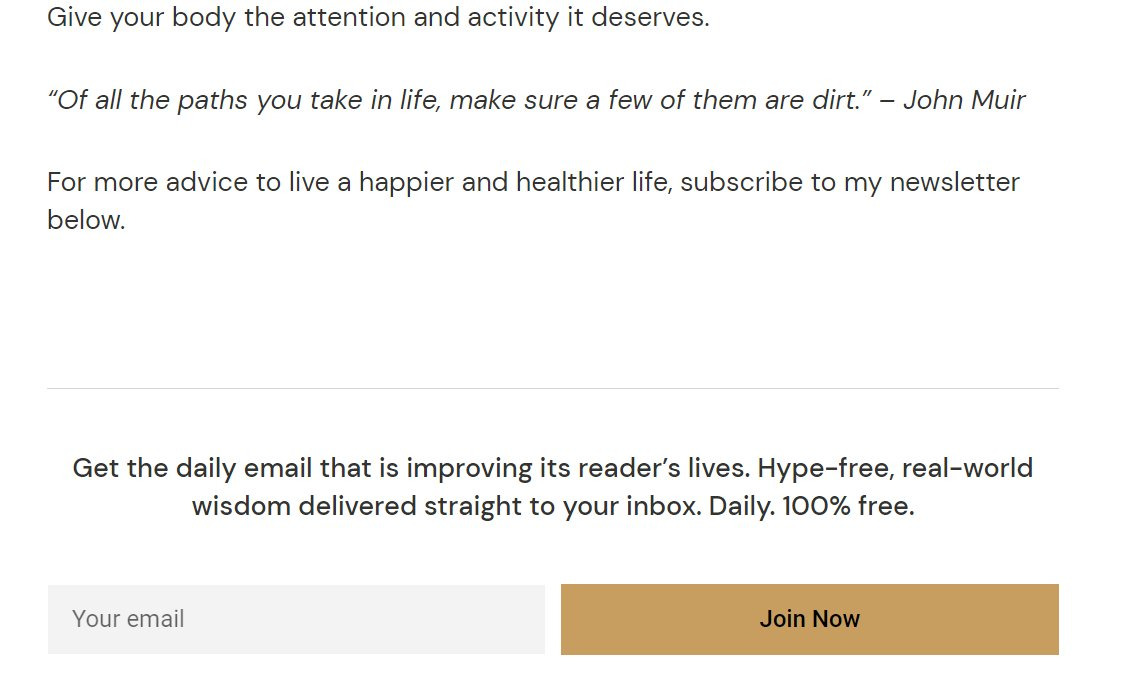
This could just as easily be a product offering instead of an email opt-in, but it doesn’t have to be. Email leads can be valuable too.
Step 3. Build your ad
Mike kept this part super simple and eye-catching:
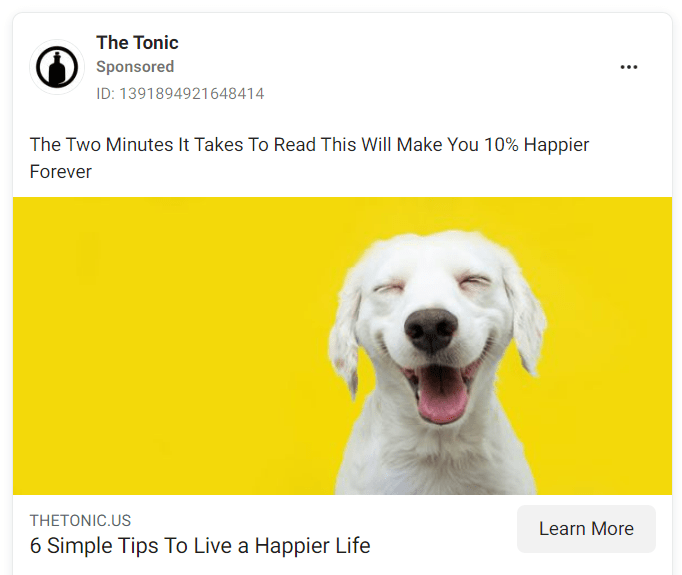
The yellow color makes it stand out, and the title makes it more clickable. Check out our guide to online advertising for more help with this.
Making a guest appearance on other people’s blogs, podcasts, or YouTube channels is a great way to get free advertising for your own business.
In fact, when I first started my SEO business, I got three of my biggest clients because they either read one of my guest posts or heard me as a guest on the EOfire podcast—neither of which cost me a penny. It was free advertising at its finest.
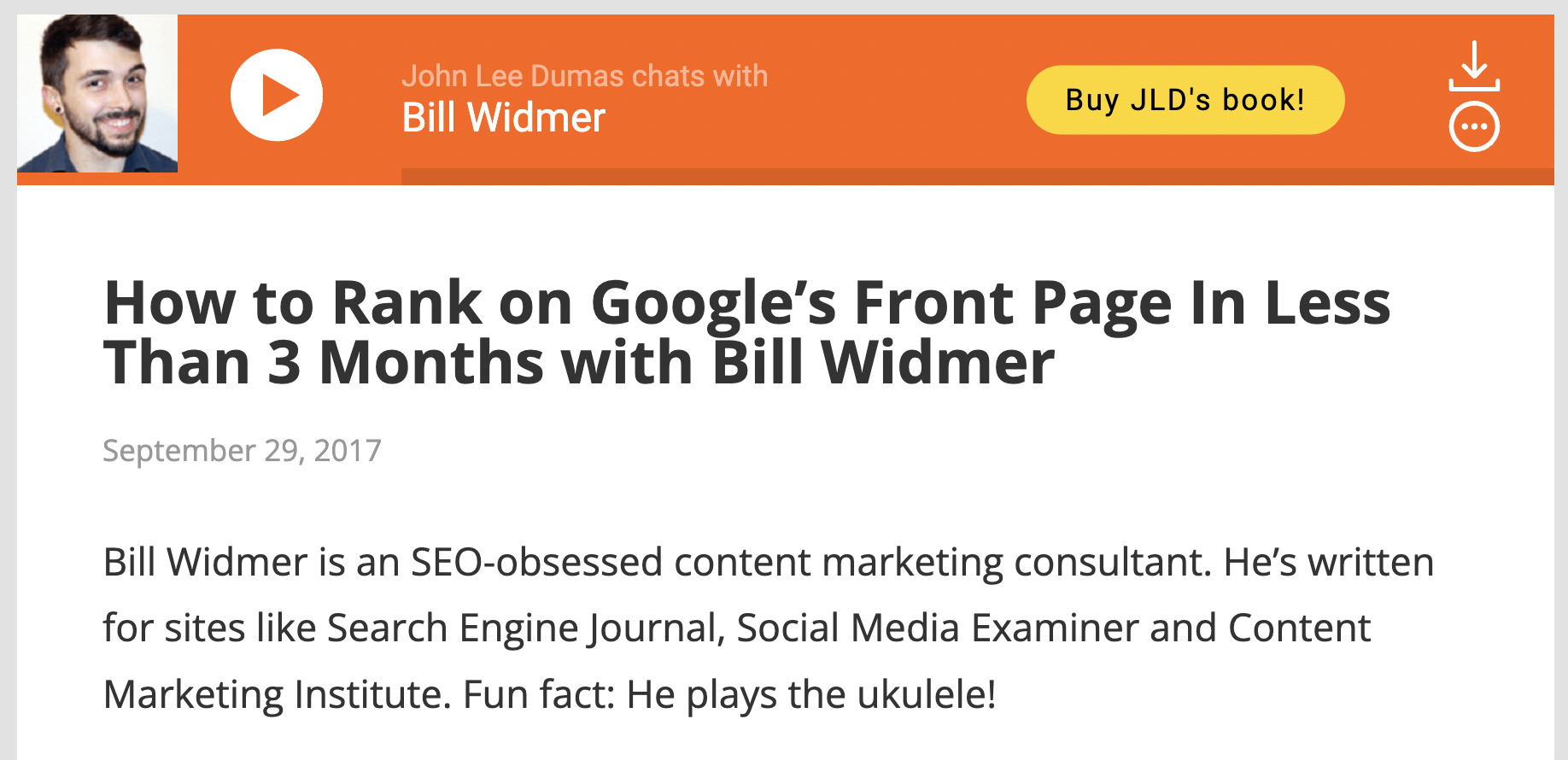
We have a full guide to guest blogging you can check out to learn more, but the process is simple:
Step 1. Identify potential places to be a guest
Find blogs, podcasts, or YouTube channels that are complementary (not each other’s competition).
For my SEO business, I wrote guest posts on marketing blogs like Hootsuite, Social Media Examiner, and Conversion Science. These blogs all discuss marketing but don’t offer SEO, so working together is a win-win.
For this step, just head to Google and look up keywords related to your niche. If you sell coffee, for example, search “coffee,” “how to make coffee,” etc., and look at any blogs that write about coffee but don’t sell it.
Use search operators to make your life easier. You can find blogs actively looking for guest writers by adding things like “write for us” (including the quotes). You can also add “podcast” to your search to find podcasts and move your search to YouTube for YouTube opportunities.
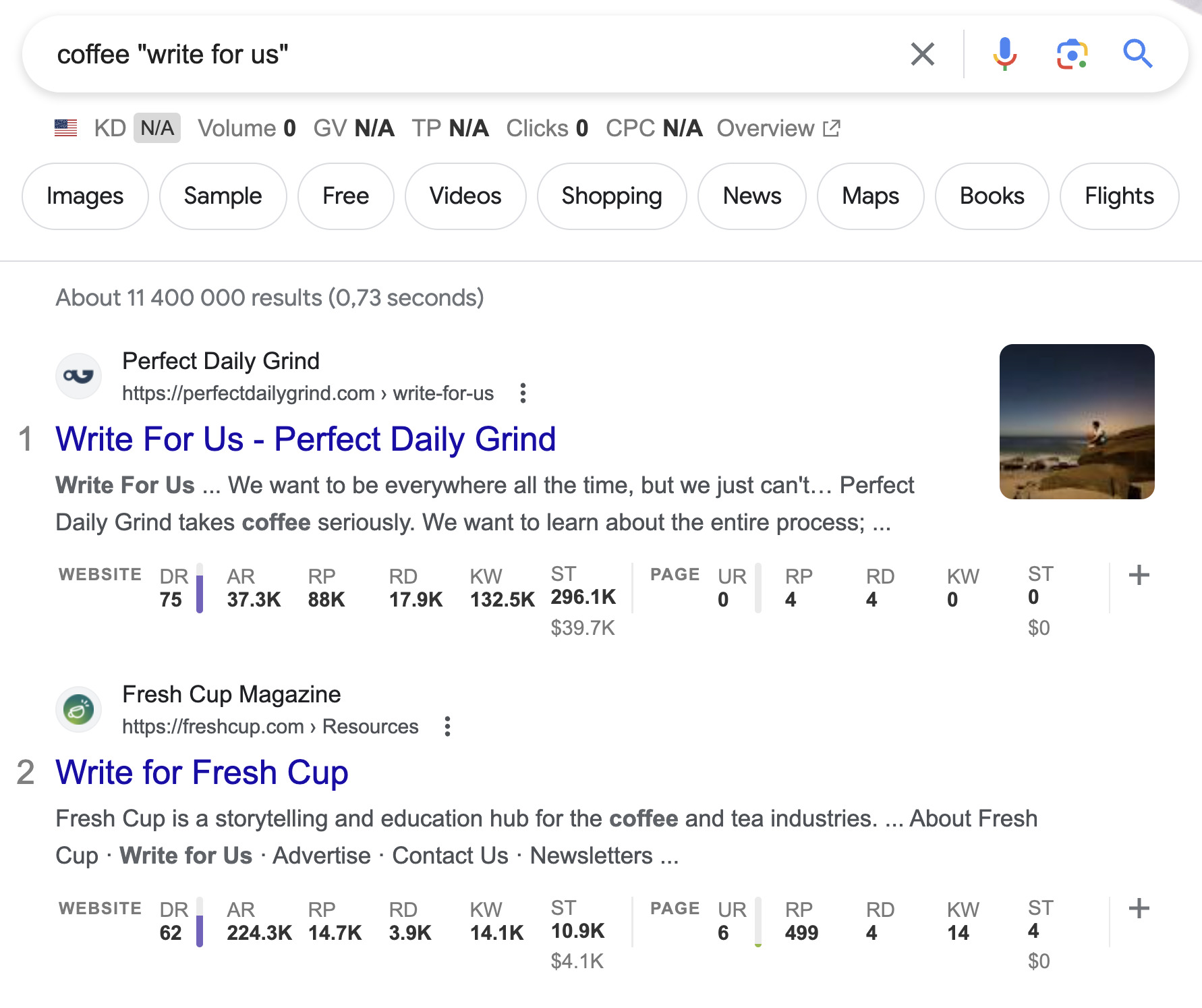
Pro Tip
Writing guest posts and being a guest on a podcast are also great ways to build backlinks for SEO. If you get Ahrefs’ SEO Toolbar, you can see stats like DR at a glance and prioritize reaching out to sites with higher DR scores.
Step 2. Reach out and ask
Once you’ve found a few potential targets, head to their contact page and send them a message. You can send something like this (but it’s always good to write your own):
Hey {their name},
My name is {your name}. I’m reaching out because I just {read their blog post/listened to their podcast/watched their YouTube channel} and loved it!
{Write something specific on what you enjoyed about their content.}
I’m also into {subject}, and I was wondering if you’d be open to me {writing a guest post/being a guest on their podcast, YouTube channel, etc.}.
I’d love to talk about {topic} because {why you care about that topic}. I promise to deliver something really valuable if you let me.
Would {date} at {time} or {other date} at {other time} be better for you to discuss?
Thanks,
{Your name}
If you can’t find a way to contact them on their website, you can also try looking on their Facebook page for an email. The more personal and interesting your proposal sounds, the better your shot at succeeding.
Final thoughts
Now you know the five proven step-by-step methods to advertise your small business on a budget. I’ve personally had success with every one of these strategies, but they do take time and have a bit of a learning curve if you’re new to them.
My advice is to pick one or two and try them for at least a few months. None of these will give you overnight success (except maybe paid advertising if you’re really good at it). But with a little time and dedication, you’ll see the money coming in before you know it.
Questions? Comments? Ping me on Twitter.
Content Copyrights Belong to The Author. All Rights Reserved.
We're A Dallas Digital Marketing Agency That is Experts At Social Media Marketing, Website Design and Emarketing and Promotion.

